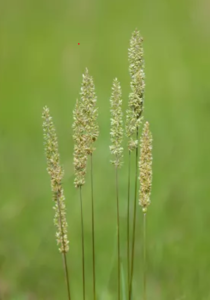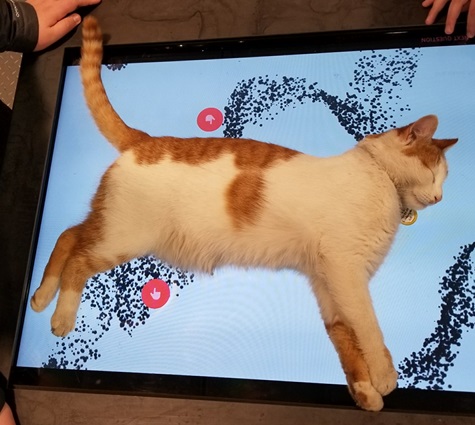2.6 Setting Up & Solving Proportions
Applications
If you need to use 140 pounds of seed on a restoration site and the ratio of bluebunch wheatgrass to Idaho fescue to prairie junegrass is 2:3:1, how many pounds of Idaho fescue will be in the mix?

A proportion is a mathematical statement that two ratios are equal. You can tell ratios are equal if they simplify to the same fraction when put into lowest terms.
Practice Exercises
Determine whether each proportion is true or false by simplifying each fraction.
- [latex]\frac{6}{8}=\frac{21}{28}[/latex]
- [latex]\frac{10}{15}=\frac{16}{20}[/latex]
A common method of determining whether a proportion is true or false is called cross-multiplying or finding the cross products. We multiply diagonally across the equal sign. In a true proportion, the cross products are equal.
Examples: Verifying a Proportion with Cross-Multiplication
Cross-multiply to determine if the proportion is true.
A) [latex]\frac{3}{4}=\frac{21}{28}[/latex]
B) [latex]\frac{1}{3}=\frac{5}{20}[/latex]
Practice Exercises
Determine whether each proportion is true or false by cross-multiplying.
- [latex]\frac{6}{8}=\frac{21}{28}[/latex]
- [latex]\frac{10}{15}=\frac{16}{20}[/latex]
- [latex]\frac{14}{4}=\frac{15}{5}[/latex]
- [latex]\frac{0.8}{4}=\frac{5}{25}[/latex]
If a proportion has a missing number, we can use cross multiplication to solve for the missing number.
To solve a proportion for a variable:
- Set the cross products equal to form an equation of the form [latex]{a}\cdot{d}={b}\cdot{c}[/latex].
- Multiply across the diagonal.
- Divide this product by the number that isn’t on the diagonal. (so, [latex]{a}\cdot{d}={b}\cdot{c}[/latex]
You may discover slightly different methods that you prefer. If you think “Hey, can’t I do this a different way?”, you’re probably right.
Examples: Finding the Missing Number in a Proportion
A) [latex]\frac{8}{11}=\frac{x}{14}[/latex]
B) [latex]\frac{3}{5}=\frac{6.2}{n}[/latex]
Practice Exercises
Solve for the variable.
- [latex]\frac{8}{10}=\frac{x}{15}[/latex]
- [latex]\frac{3}{2}=\frac{7.5}{n}[/latex]
- [latex]\frac{3}{k}=\frac{18}{24}[/latex]
- [latex]\frac{w}{6}=\frac{15}{9}[/latex]
- [latex]\frac{5}{4}=\frac{13}{x}[/latex]
- [latex]\frac{3.2}{7.2}=\frac{m}{4.5}[/latex]
Problems that involve rates, ratios, scale models, etc. can be solved with proportions. When solving a real-world problem using a proportion, be consistent with the units.
The mark-recapture method is an ecological technique used to estimate the size of an animal population when it’s not practical to count every individual. The method assumes that the proportion of marked organisms recaptured in a second sample is the same as the proportion marked in the total population. The equation for this proportion is:
Examples: Using Proportions in Applied Problems
A) My black bear population averages 1.3 cubs per sow. If I have 42 sows, how many cubs are in the population?
B) A landscaper is planting a tree. They need to dig a hole that is one meter deep for every two meters of tree height. How deep will the hole need to be for a 15′ tree?
C) You earn $2,300 during the first two weeks of fire season. If work keeps up at this rate, how much will you earn by the time school begins in 12 more weeks?
D) You’re trying to get a handle on the size of the invasive bullfrog population in Turnbull National Wildlife Refuge. A time-limited survey of permanent ponds on the refuge yields 37 bullfrogs. You mark each of these frogs with fluorescent dye and release them. The next day, you run the same time-limited survey. You capture 42 bullfrogs. Fifteen recaptured bullfrogs have the fluorescent mark you placed on them yesterday. Based on these data, how large do you estimate the bullfrog population is?
Practice Exercises
- Tonisha drove her car [latex]320[/latex] miles and used [latex]12.5[/latex] gallons of gas. At this rate, how far could she drive using [latex]10[/latex] gallons of gas?
- Marcus worked [latex]14[/latex] hours and earned [latex]\$210[/latex]. At the same rate of pay, how long would he have to work to earn [latex]\$300[/latex]?
- Taylor is trying to figure out the straight-line distance from Portland to Mt. Hood. On their map, [latex]\frac{3}{4}[/latex] inch represents [latex]5[/latex] miles. The distance between Portland and Mt. Hood on the map is pretty close to [latex]7[/latex] inches. What is the actual distance?
- Púki the cat lives in a Reykjavík bookstore and likes to sleep on a warm tabletop video screen. Suppose you have a picture of Púki that is [latex]285[/latex] pixels wide and [latex]255[/latex] pixels high but you need to reduce it in size so that it is [latex]170[/latex] pixels high. If the height and width are kept proportional, what is the width of the picture after it has been reduced?

That’s pronounced “pookee”, not “pyookee”.
Problem Set 2.6
- If you need to use 140 pounds of seed on a restoration site and the ratio of bluebunch wheatgrass to Idaho fescue to prairie junegrass is 2:3:1, how many pounds of Idaho fescue will be in the mix?
- Stacey worked two weeks of wildland fire and earned $1,530. At the same rate of pay, how long would she have to work to earn rent for the year (12 months) at $930 per month?
- You’re trying to get a handle on the size of the Yellow-bellied Marmot population in Riverfront Park. Trapping efforts yield 87 marmots. You put a metal band on each marmot’s leg and release them. The next day, you run the same trapping effort survey. You capture 68 marmots. Fifteen recaptured marmots have the fluorescent band you placed on them yesterday. Based on these data, how large do you estimate the population is?

